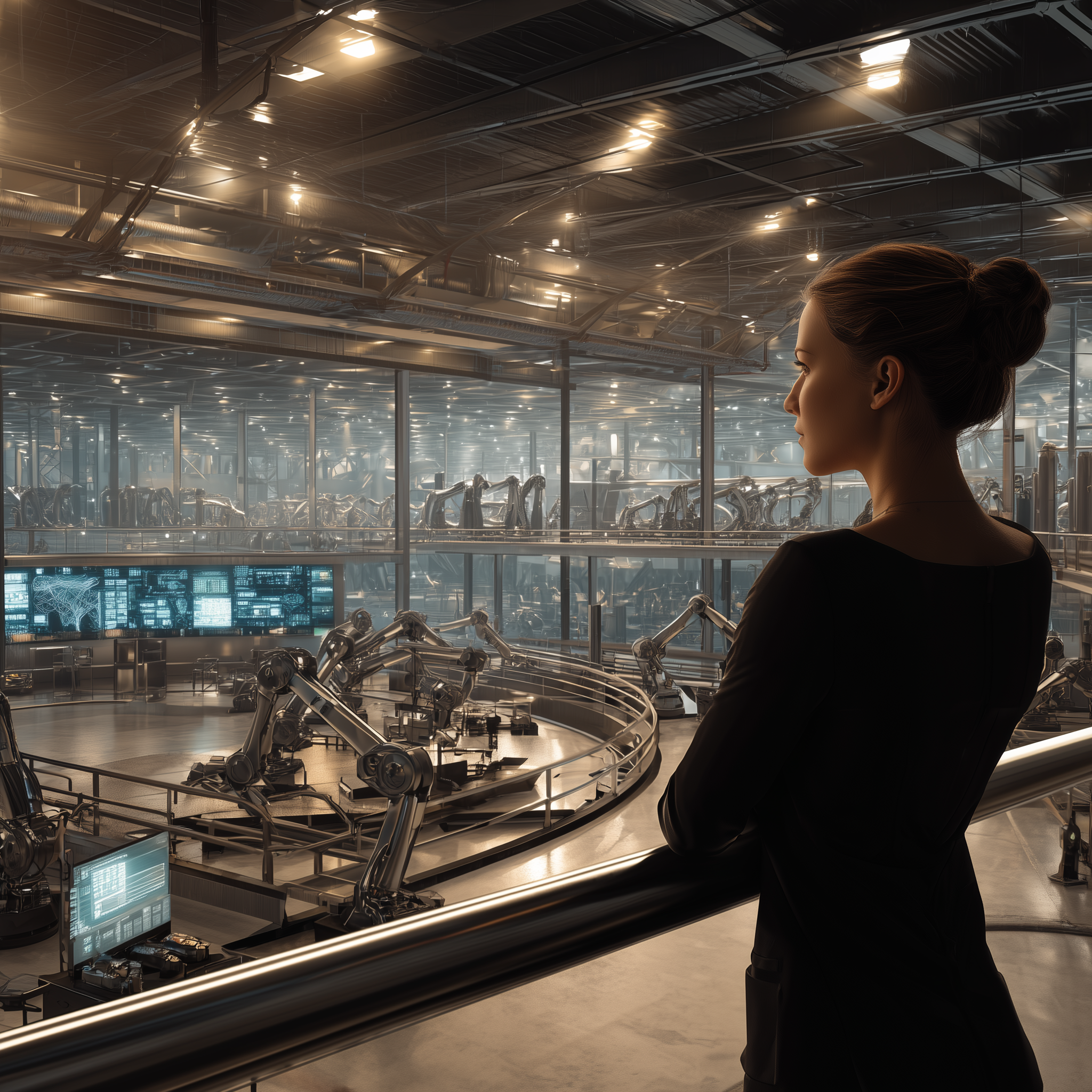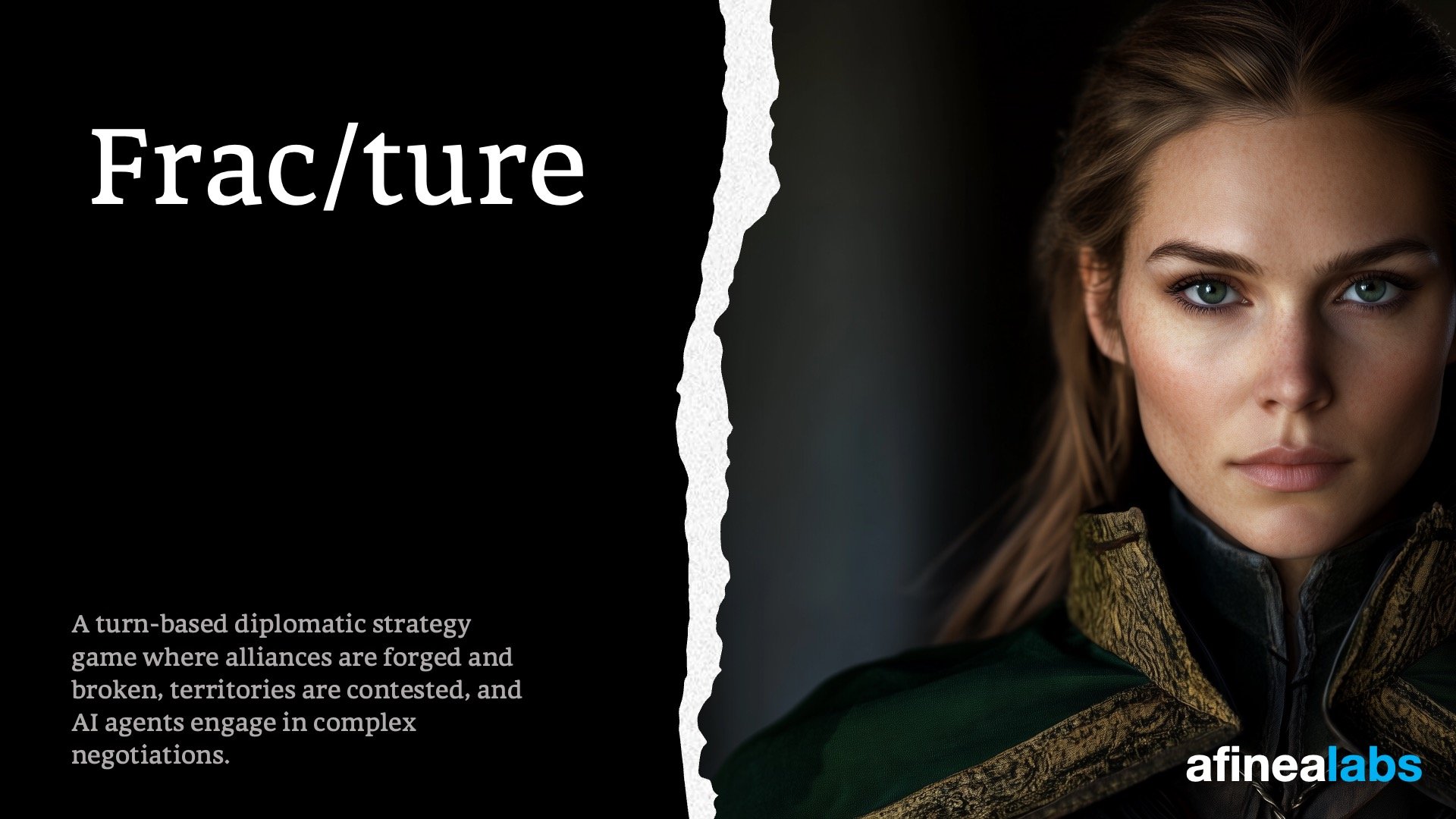A year ago, I hadn't written code in 25 years.
Today, I'm shipping software faster than I ever did when coding was my full-time job as a technical co-founder.
Looking back on 2025, I keep returning to one moment: a transatlantic flight where my Claude Code swarm built what would have taken a team 18 developer-days in 6 hours.
That flight forced me to confront something I'd been circling for months: I wasn't coding anymore. I was conducting.
The shift sounds semantic. It isn't.
Coding means writing every line. Conducting means orchestrating agents who plan, build, test, review, and deploy—often going beyond what you explicitly asked for. I've watched them debate approaches among themselves. Implement performance optimizations I hadn't considered. Even leave judgmental comments about code they found elsewhere that "could use improvement."
This is the concept of synthetic leverage that I have been exploring all year. The ability to multiply output without multiplying people.
But here's what took me longer to learn: synthetic leverage requires trust.
We're not quite ready to let agents write all the code, even though they are getting better and better... moving from raw interns to more seasoned developers.
It's because of this that I am now treating agents more as teammates. And the same principles I used to manage human teams apply. Clear context upfront—vision docs, architecture specs, EPICS, etc. Delegation with guardrails, not micromanagement. Regular audits to understand not just what they built, but why. And feedback loops that make the next sprint better than the last.
The agents who've absorbed my coding philosophy through documentation? They make better decisions and gain more autonomy.
The implications are profound:
For founders: A single person can now build and ship rich prototypes in weeks. The barriers to entry have collapsed.
For CEOs with large dev teams: The modern moat is a unique understanding of a problem domain and unmatched execution velocity. You don't get that from just adding more humans.
I've spent my career leading companies from $5M to $500M in ARR, at times, leading thousands of employees. I thought I understood leverage. I didn't. Not like this.
The uncomfortable truth? This isn't about the tools. It's about letting go. Letting agents review each other's work. Letting swarms find solutions you'd never consider. Trusting workflows to enforce standards you might skip.
After a year of building this way, I'm convinced we're witnessing a fundamental shift in how software gets made—and who gets to make it.
The question isn't whether AI will reshape your business. It's about whether you're ready to lead that AI-powered transformational change.
Thanks to the thrilling experience of building again, I know I am back solidly in founder mode ... so stay tuned for an exciting 2026 ... new things are coming!
Carpe Agentem. 🎼
#AgenticDevelopment #AI #StartupLife #SyntheticLeverage #ImageByNanoBanana
Treating Agents Like Teammates
Claude Code and Opus 4.5 have recently made meaningful strides in raising the bar on agentic development. However, I’ve discovered that when you treat the agents more as teammates and less as automatons they really excel.
Let me explain.
Claude Code’s GitHub integration finally lets me manage agents the way a great CTO manages developers: with clear objectives, structured workflows, nuanced guardrails, and most importantly, stable context.
I start every project in Claude Code's planning mode now. The agents and I work together to draft comprehensive plans. I review. We iterate. Then, and this is the key, we instantiate those plans as GitHub epics.
Each epic becomes a container for related issues. Each issue becomes a discrete task with clear objectives, architectural guidelines, and acceptance criteria. The agents work methodically through the issues and submit PRs when done. They even check each other’s work, just like a human team would.
Because Claude Code maintains context through these epics, we’re no longer fighting context window exhaustion. A three-week project stays coherent from day one to deployment. The agents can see the overall arc of the project at any time, track progress, and recall the architectural decisions from week one as they implement features in week three.
The results have been striking. Code quality has improved markedly. The agents are producing more consistent, better-structured code that actually follows our established patterns. Error rates have dropped to levels I’d expect from more senior developers, not the interns agents sometimes seem to channel. And if they stray, I just ask them to revisit the epic and validate whether they’ve delivered against the requirements. They usually course-correct.
With a growing level of comfort, I’m now starting to let the agents monitor GitHub on their own and select their own epics to work on, updating the underlying GitHub issues as they make progress.
They’re not just executing rote tasks anymore—they’re participating in overall project management.
Great tech leaders don’t micromanage. They set clear objectives, establish workflows, remove blockers, and trust their teams to deliver. That’s precisely what I’m doing with my agent teammates now. I’m just applying decades of engineering management wisdom to a new kind of hybrid team. And it’s working.
Carpe Agentem. 🎯
#AgenticDevelopment #GitHubIntegration #ClaudeCode #EngineeringManagement #AI #FutureOfWork
Ensuring Repeatable Agentic Results
After weeks of curiosity (and even some skepticism) about my "six-hour flight app build," I finally had a chance to document the process and the tools I use.
What started as a simple "how do you do this" request turned into something a bit more profound. Recording myself explaining the agentic stack forced me to confront a truth: We're not coding anymore. We're conducting.
My tech stack? Claude Flow, Claude Code, OpenAI Codex, Cursor, GitHub Codespaces, Neon, Railway, Doppler, Snyk, Trivy, CodeRabbit, Clerk, etc. But that's like saying a symphony is just instruments.
The real magic happens in the orchestration. Vision documents that become living touchstones. Product Requirements and Technical Architecture Docs that agents reference hundreds of times per build. Implementation plans that update themselves. Sprints & Phases with kickoff prompts, completion docs, and handoff protocols.
Each phase starts fresh. No context window exhaustion. No drift. Just clarity.
My canonical starting templates are designed to support GitHub Codespaces for virtual development (available from any machine at any time). They come pre-loaded with GitHub workflows that reinforce linters, security, code reviews, and more, and support out-of-the-box deployment pipelines for Docker, Azure, Railway, and more.
When it gets to swarms, it gets even more interesting. The swarms don't just execute what you tell them to do. They can debate among themselves. For example, you can ask three agents to tackle the same problem. A fourth synthesizes their approaches. It's ideation and peer review at machine speed.
The video walks through everything. The templates. The workflows. And why you should consider the Claude Flow framework from Reuven Cohen that enables true swarm intelligence.
But here's the uncomfortable truth: This isn't about the tools. It's about letting go.
Letting agents review each other's work. Letting workflows enforce standards, I might skip. Letting swarms find solutions I'd never consider.
After 25 years away from coding, I'm shipping software faster than ever. Not because I got better at programming. Because I learned to conduct instead of code.
This is where I stand today. But it's fluid and dynamic. As tools become available, I try to adopt them. And note that not all of these tools and frameworks may be suitable for you. Feel free to build your own orchestra.
But the future isn't about YOU writing better code. It's about you becoming a better conductor of an orchestra of agents who can research, design and code for you.
Carpe Agentem. 🎼
#AgenticDevelopment #SoftwareEngineering #AI #StartupLife #SyntheticLeverage
Swarms at 34,000 feet
Design partner meeting in 48 hours. The platform wasn't quite ready. So I decided to put my Claude Code swarm to work at 34,000 feet.
By the time we crossed Iceland, they'd built over 50 React components, a complete mock API set simulating three required enterprise integrations, and a full admin interface. Initial testing indicated the platform could handle 1,000+ concurrent users with sub-200ms response time.
The agents called it "an extraordinary feat of engineering prowess." I had to laugh at their self-congratulation (reminds me of that time they claimed "100% robust, guaranteed" code). But they weren't wrong about the output.
What typically takes 18 developer-days was compressed into 6 hours. Complete with a fully responsive front-end, MCP-powered extensions, third-party Enterprise SaaS app integration, customizable dashboards, multi-modal content delivery (including voice), enterprise security, and role-based access control. Fully documented. Comprehensive TDD with all tests passing. Clean linter reports. Secondary security checks passed. Production-ready Docker configs. Kubernetes orchestration. Even a full CI/CD pipeline.
All before the seat belt sign came back on.
The craziest part? While I reviewed their work over mediocre airline coffee, they were already implementing performance optimizations I hadn't explicitly asked for. Just like they always do.
Two days from now, when the design partner (hopefully) marvels at our development velocity, I'll tell them about my transatlantic engineering team.
Welcome to the age of synthetic leverage. Where your most productive office is a metal tube at cruising altitude.
Having built multiple startups ... having experienced this sort of time pressure many times before ... I've never experienced this sort of technology leverage. Ever. It's frankly thrilling.
Carpe Agentem ✈️
#AgenticDevelopment #StartupLife #AI #ProductDevelopment
Building the Ultimate React Template: A Blueprint for Modern Web Development Success
🚀 The Challenge: Starting Right in a Complex Ecosystem
Every developer knows the pain: you're excited to build a new React application, but before you can write a single line of business logic, you're drowning in configuration files, security considerations, testing setups, and deployment pipelines. Hours—sometimes days—disappear into the void of "project setup."
But what if you could start every project with enterprise-grade infrastructure from day one?
We therefore decided to build a comprehensive React Github template from which all our projects will be built, that embodies modern best practices, security-first thinking, and developer experience excellence. This isn't just another boilerplate—it's a production-ready foundation that scales from prototype to enterprise.
🎯 Why This Matters: The Hidden Cost of Poor Foundations
In software development, the early decisions you make don’t just shape your project, they echo throughout its entire lifecycle. What seems like a shortcut today can become a costly detour tomorrow. From technical debt to security risks and delayed infrastructure, the data is clear: weak foundations silently sabotage progress, inflate budgets, and erode team velocity. Let’s unpack the real cost of getting it wrong from the start.
The Industry Problem
According to recent surveys:
67% of projects suffer from technical debt introduced in the first month
43% of security vulnerabilities stem from misconfigured initial setups
$85,000 average cost to retrofit proper testing infrastructure later
3-6 months typical time to implement proper CI/CD after project start
The Compound Effect
Starting with a weak foundation doesn't just slow you down initially—it compounds exponentially:
No tests early → Harder to add tests later → More bugs in production
No CI/CD → Manual deployments → Human errors → Downtime
No security scanning → Vulnerabilities accumulate → Breach risk increases
No versioning system → Chaotic releases → Poor user experience
No documentation → Knowledge silos → Team scaling issues
💎 What We've Built: A Complete Modern Stack
We’ve architected a full-stack foundation that’s fast, secure, and built for scale. From cutting-edge frontend tools to robust backend services, automated testing, and streamlined DevOps, every layer is optimized for developer productivity and long-term maintainability. This isn’t just a tech stack—it’s a launchpad for high-velocity teams.
Core Technology Stack
Frontend:
- React 18.3.1 with TypeScript 5.9.2
- Vite 7.1.4 for lightning-fast builds
- Tailwind CSS 3.4.17 for utility-first styling
- shadcn/ui components for consistent UI
- React Router 7.8.2 for navigation
Backend:
- Express.js 4.21.2 with TypeScript
- Node.js 22 LTS for modern JavaScript features
- Modular architecture with service layers
- RESTful API with OpenAPI documentation
Security:
- Helmet.js for security headers
- Rate limiting on all endpoints
- CSRF protection
- Input validation with express-validator
- Automated vulnerability scanning
- 0 known vulnerabilities in baseline template
Testing:
- Vitest for unit testing
- Playwright 1.55 for E2E testing
- Accessibility testing with axe-core
- 100% critical path coverage
- Parallel test execution
DevOps:
- GitHub Actions CI/CD pipelines
- Docker containerization with multi-stage builds
- Production-optimized images (~150MB)
- Docker Compose orchestration
- Automated security scanning
- Multi-environment deployments
- Automatic dependency updates
🏗️ The Architecture: Built for Scale
Scalability isn’t a feature, it’s a mindset baked into every layer of our architecture. From modular services that keep code clean and maintainable, to automated versioning that ensures consistency across environments, we’ve built a system that grows effortlessly with your needs. Add in rigorous testing, production-grade Docker support, and security-first design, and you get an architecture that’s not just ready for today, but engineered for tomorrow.
1. Modular Service Architecture
Instead of spaghetti code, we've implemented a clean service-based architecture:
// Service Factory Patternconst { logger, authService, securityService, validationService } =
ServiceFactory.createAllServices();
// Clean separation of concerns
server/
├── services/ # Business logic
├── routes/ # API endpoints
├── middleware/ # Cross-cutting concerns
└── types/ # TypeScript definitions
2. Automatic Versioning System
One of our proudest achievements: a complete semantic versioning system that:
Tracks everything: Version, build number, git commit, timestamps
Updates everywhere: package.json, changelog, TypeScript constants
Git integration: Automatic tagging and releases
Client-server sync: Version compatibility checking
Simple commands:
npm run version:minor "New feature"
# Example workflow
npm run version:minor "Added user authentication"
# Automatically:# ✓ Bumps version to 2.2.0# ✓ Updates 6 version files# ✓ Updates CHANGELOG.md# ✓ Creates git tag# ✓ Ready to push
3. Comprehensive Testing Strategy
We've implemented a three-tier testing approach:
// Unit Tests (Vitest)describe('SecurityService', () => {
it('should validate CSRF tokens correctly', () => {
// Fast, focused unit tests
});
});
// Integration Testsdescribe('API Endpoints', () => {
it('should require authentication', async () => {
// Test actual API behavior
});
});
// E2E Tests (Playwright)test('User journey', async ({ page }) => {
await page.goto('/');
// Test real user workflows
});
4. Docker Containerization: Production-Ready from Day One
Docker support is built into the template's DNA, not bolted on as an afterthought:
# Multi-stage build for optimizationFROM node:22-alpine AS deps
# Install only production dependenciesFROM node:22-alpine AS builder
# Build the applicationFROM node:22-alpine AS runner
# Minimal runtime with security hardeningUSER nodejs
EXPOSE 8080
Key Docker Features:3-stage builds: Optimized for size (1GB → 150MB)
Security hardening: Non-root user, minimal base image
Health checks: Built-in container health monitoring
Signal handling: Proper shutdown with dumb-init
Development mode: Hot reload with volume mounting
Orchestration ready: Docker Compose for both dev and prod
# Simple commands for Docker operations
npm run docker:build# Build production image
npm run docker:run# Run container
npm run docker:start# Start with docker-compose
./scripts/docker.sh health# Check container health
5. Security-First Approach
Security isn't an afterthought—it's woven into every layer:
// Automatic security headers
app.use(helmet({
contentSecurityPolicy: {
directives: {
defaultSrc: ["'self'"],
styleSrc: ["'self'", "'unsafe-inline'"],
scriptSrc: ["'self'"],
},
},
}));
// Rate limitingconst limiter = rateLimit({
windowMs: 15 * 60 * 1000,// 15 minutesmax: 100,// limit each IP
});
// Input validation on every endpoint
router.post('/api/contact',
body('email').isEmail().normalizeEmail(),
body('message').trim().isLength({ min: 1, max: 1000 }),
validationMiddleware,
// ... handle request
);
📊 The Results: Measurable Success
We didn’t just build software, we engineered a foundation for long-term velocity. From a modular service architecture that keeps code clean and maintainable, to automated versioning that ensures consistency across environments, every layer is designed for reliability and developer efficiency. Add in comprehensive testing, production-grade Docker support, and a security-first mindset, and you’ve got a stack that’s ready for anything.
Development Velocity
80% reduction in project setup time (days → hours)
3x faster feature development with pre-built infrastructure
90% less configuration debugging
Instant production-ready deployments
Quality Metrics
0 security vulnerabilities baseline
100% TypeScript type coverage
<200ms build times with Vite
Sub-second test execution
A+ security headers rating
Real-World Impact
Starting with this template means:
Day 1: Full CI/CD pipeline operational
Week 1: First production deployment with confidence
Month 1: Feature development at full velocity
Year 1: Minimal technical debt accumulation
Intelligent Automation
We've automated the repetitive without removing control:
# Automatic formatting on save
# Automatic linting before commit
# Automatic tests before push
# Automatic security scans daily
# Automatic dependency updates weeklyClear Documentation
Every aspect is documented:
Setup guides for different environments
API documentation with examples
Testing guides with best practices
Security implementation details
Deployment procedures
Dependency Management Excellence
We've just completed a comprehensive upgrade:
All 50+ dependencies updated to latest stable versions
Zero breaking changes with careful version selection
Automated testing ensures compatibility
Clear upgrade documentation
Version Tracking
{
"version": "2.1.1",
"timestamp": "2025-09-04T11:45:42.197Z",
"build": {
"number": 1756986342243,
"commit": "db48488",
"branch": "main",
"author": "Mark Ruddock"
}
}
🚦 GitHub Actions: CI/CD Excellence
Our CI/CD pipeline isn’t just automated, it’s intelligent, secure, and fast. Built with GitHub Actions, it enforces code quality, runs layered testing, scans for vulnerabilities, and deploys with zero downtime. Every commit goes through a multi-stage process designed to catch issues early, ship confidently, and maintain velocity without sacrificing reliability.
Multi-Stage Pipeline
Our GitHub Actions workflow implements industry best practices:
Code Quality (2 min)
ESLint with security rules
Prettier formatting
TypeScript type checking
Testing (3 min)
Unit tests with coverage
Integration tests
E2E tests with Playwright
Security (1 min)
npm audit
Custom security checks
Dependency scanning
Build (2 min)
Production optimized builds
Asset optimization
Source map generation
Deploy (Auto on main)
Zero-downtime deployments
Automatic rollback capability
Environment-specific configs
💡 Key Learnings: Wisdom from the Trenches
Building great software isn’t just about writing code, it’s about making the right decisions early and often. After countless iterations, real-world deployments, and hard-earned lessons, we’ve distilled a set of principles that consistently drive success. From embedding security from day one to automating everything and documenting as we go, these learnings are the foundation of resilient, scalable, and developer-friendly systems.
1. Start with Security
Security retrofitting is 10x more expensive than building it in:
Use security headers from day one
Implement rate limiting immediately
Validate all inputs always
Scan dependencies continuously
2. Automate Relentlessly
Every manual process is a future failure point:
Automate testing
Automate deployments
Automate version management
Automate dependency updates
3. Document as You Build
Documentation written later is documentation never written:
Document decisions in code comments
Keep README current
Generate API docs from code
Include "why" not just "what"
4. Test at Every Level
Different tests catch different bugs:
Unit tests for logic
Integration tests for workflows
E2E tests for user journeys
Performance tests for scalability
5. Version Everything
Semantic versioning isn't just for libraries:
Version your application
Version your API
Version your database schema
Track everything
6. Containerize Early
Docker from day one provides:
Consistent environments across dev/staging/prod
No "works on my machine" problems
Easy scaling and orchestration
Simplified deployment to any cloud
Security isolation by default
🌟 The Competitive Advantage
This isn’t just a template, it’s a strategic accelerator. By starting with a battle-tested foundation, we bypass weeks of setup, avoid common missteps, and launch with confidence. But the real value compounds over time: smoother scaling, faster onboarding, and sustained velocity, all backed by built-in security and best practices.
Using this template gives us:
Immediate Benefits
Save 2-3 weeks of setup time
Avoid common pitfalls that plague 90% of projects
Start with best practices not technical debt
Deploy with confidence from day one
Long-term Benefits
Scale smoothly from MVP to enterprise
Onboard developers faster with clear patterns
Maintain velocity as complexity grows
Sleep better knowing security is handled
🎉 Celebrating Success
This template represents:
500+ hours of development experience distilled
50+ dependencies carefully selected and configured
20+ GitHub Actions workflow optimizations
15+ security measures implemented
3-stage Docker build optimized to 150MB
2 Docker Compose configurations (dev + prod)
10+ Docker management commands ready to use
0 compromises on quality
But more than numbers, it represents a philosophy: doing things right from the start is always faster than fixing them later.
🏆 The Value of a Strong Start
In a world where 60% of projects fail due to poor technical foundations, this template is your insurance policy. It's the difference between struggling with configuration and shipping features. Between fighting fires and building the future.
Every great application deserves a great foundation. This is yours.
Start building with confidence. Start building with this template.
"The best time to plant a tree was 20 years ago. The second best time is now."
—Chinese Proverb
The best time to start with proper infrastructure was at the beginning. The second best time is with this template.
Built with ❤️ and extensive experience by the development community
Special thanks to Claude Code for assistance in achieving excellence
#ReactJS #TypeScript #WebDevelopment #BestPractices #OpenSource #DevOps #Docker #Containerization #Security #Testing #ContinuousIntegration #DeveloperExperience #ModernWeb #FullStack #EnterpriseReady #ProductionReady #Template #DockerCompose #MultiStageBuilds
The Power of Swarms
After ten months of building with AI agents, I crossed a milestone over the weekend: $18 million in equivalent developer output. That's over 150 person-years of development. But it was the swarms that delivered almost as much functioning software in the past two months as we had collectively delivered over the eight prior months.
But here's what the headlines miss about agent swarms.
While it's right to celebrate the economics and reflect on the exciting productivity metrics, what the headlines don't tell you is how fundamentally different swarm development feels.
Traditional coding is linear. You write, you debug, you deploy. One thread of consciousness attacking one problem at a time.
Swarm development is orchestral. Right now, thanks to Claude Code and the Claude Flow hive framework from Reuven Cohen, I have 12 agents working in parallel: • 3 refactoring our LLM observability platform • 4 building new features for a new Breakfast with AI app • 2 writing documentation • 3 running security audits before the code is approved for release.
They're not just following instructions. They're "reasoning", debating, and course-correcting. One agent identifies a performance bottleneck, alerts another, and then spins up a third to benchmark alternatives.
The cognitive load shift is profound. I've gone from writing code to conducting symphonies (or sports teams).
But here's the part that keeps me up at night: We're not even close to the ceiling. We're still battling with some serious limitations:
🧠 Limited context windows (even at 200k tokens)
🔄 Not quite getting it right the first time
💰 Compute costs at scale
🎯 Focus drift in complex, long-running tasks
We're solving these systematically. New orchestration frameworks. Better memory systems. Smarter agent hierarchies.
The next milestone? $100M in output by year-end. Not because I'm chasing numbers, but because each breakthrough unlocks new possibilities.
Three months ago, a board member asked me: "Why do we need 150 developers?". It was a good question.
Today, the question isn't whether agent swarms will transform software development. The question is whether you will be conducting the orchestra or watching from the sidelines.
To my fellow technical founders: If you haven't experienced swarm development yet, expose yourself to it fast. This isn't the future of coding anymore. It's Tuesday afternoon in my home office.
Welcome to the age of synthetic leverage.
Carpe Agentem.
#AI #AgenticDevelopment #SoftwareEngineering #FutureOfWork #Innovation
Balancing the Risks and the Rewards of AI
We're facing one of the most important risk vs reward debates of our time.
Following on from my recent discussions with boards and C-level peers, it's pretty clear that AI is reshaping most enterprises. It's accelerating productivity, transforming processes, and redefining entire business models. The potential is immense, compelling, and impossible to ignore.
But navigating this new terrain comes with real complexity.
We face a paradox: the same AI technologies driving innovation are also amplifying risk. Confidential data leaks, biased decisions, regulatory penalties, and novel cybersecurity threats aren’t hypothetical—they’re here, and they’re growing. High-profile incidents have shown how quickly AI can become a liability rather than an asset.
Regulators have noticed. The EU’s AI Act, coming into force this week, mandates rigorous oversight for high-risk AI applications, requiring transparency, bias audits, clear accountability, and human oversight. Similarly, the other jurisdictions are rolling out comprehensive AI risk management frameworks.
Governance of AI is no longer optional; it’s essential.
The solution isn’t to slow down innovation but to accelerate it safely. This is where AI Observability platforms come into play.
AI Observability is about transparency, visibility, and control. It’s the critical layer that turns AI’s ‘black box’ into a transparent, manageable system, providing real-time monitoring, anomaly detection, bias mitigation, and compliance enforcement. It empowers senior leaders to trust their AI investments, confidently innovate, and swiftly adapt to evolving regulations.
Companies that master AI Observability will hold a distinct competitive advantage. They’ll innovate faster, mitigate risks proactively, and earn trust with regulators, customers, and partners.
Observability isn’t just risk management; it’s strategic enablement. And it's one of our key areas of focus at GALLOS Technologies.
#AI #Observability #Governance #Innovation
Swarms Deliver Powerful Returns
Well, it's the end of another month, and it's time to check in on what the agents collectively have been up to.
TLDR: We have now delivered almost as much software in the past two months as in the prior eight months. And this is not just de novo creation (aka vibe coding), a significant portion is refactoring and extending a complex enterprise-scale LLM Observability app (which is still in stealth). And the pace is only increasing.
So what has caused this spike in productivity?
As I've moved more to swarm-based development, the velocity of what I'm able to produce has increased tremendously. The agents and I have seen a significant increase from approximately $11 million of equivalent developer output (lifetime-to-date) two months ago, to almost $18 million today.
Remembering that we started this journey in late September 2024, it took about eight months to get to $11 million, and only two months to get to $18 million. My estimates put that at 150 person-years of development so far.
Welcome to the economic leverage you can obtain from agent swarms.
This time, in addition to the approach that I've been following for the last few months, I've added a more industry-standard, SCC COCOMO approach as a comparator. This model is more sophisticated than mine and takes into account code complexity, etc.
The SCC COCOMO model, however, estimates a far higher equivalent of $55 million and over 380 person-years of output.
Hmmm ... that seems a bit outlandish ... so I'm going to stick with my more conservative approach for now.
But it just doesn't matter. The economic leverage is clear. The joy of coding again, though, is priceless.
Carpe Agentem
Coding Swarms Hit Mainstream
Starting to gain familiarity with, and get real traction from, Reuven Cohen's Claude-flow swarm technology; building and refactoring complex things with incredible velocity.
Once you have experienced this taste of the future of agentic software development, there is no going back. It's every technical founder's dream ... software at the speed of thought.
I suggest you follow the Agentics Foundation for exposure to some crazy smart people who are quite literally building the future of software development.
#Agentics
Resistance is Futile
Over the past few weeks, I have spent time walking several of my current and former board members, as well as some of my former leadership teams, through the current state-of-the-art in agentic development. Not because they need to learn to code, but because they need to understand why their entire business models might be obsolete in 18 months.
After over 25 years as a CEO, having lived through the internet, mobile, social, and fintech revolutions, I thought I'd seen every disruption. But when I returned to coding eight months ago, building 60+ apps that would have cost well over $10.8M in engineering spend, for less than $10,000, I realized: This isn't just another tech shift. It's the end of the software business as we know it.
When I demonstrate how I routinely now deliver hundreds of thousands of dollars' worth of equivalent developer productivity in 48 hours for $25 in compute costs, the room often goes silent.
When they push back with the same tropes of "well, that is not production code", I point out that two of my apps are now heading into production in G2000 companies; furthermore, these are companies in sensitive & regulated industries. These apps are at the heart of two exciting startups. AI is being used to create production code today in companies such as Microsoft, Salesforce, Oracle. Anthropic, OpenAI, Google, and Facebook. Don't for one moment cling to the notion that it is not production-capable. That comes down to how you use AI, not if you use AI.
One director finally asked: 'So... why do we have 150 developers?'
It's a good question. When one founder + AI agents outperforms a 10-person team at 1/100th the cost, every assumption about scale, hiring, and capital needs needs to be rethought.
Time is of the essence. Many boards are now planning for 2026. AI is revolutionizing next Tuesday. That disconnect will kill companies.
I often point out to the skeptics that their competitors aren't just adopting AI, they're being rebuilt by it. Reimagined by it. Reinvented by it. Rejuvenated by it. If a board doesn't understand agentic development, they're already behind.
Again, I'm not suggesting every board member learn to code. I'm saying they need to understand how AI agents work, what they can build, and why traditional planning cycles are now measured in weeks, not years.
So, talk to your boards about this... show them the art of what's now possible. Because the companies that thrive won't be the ones that merely adopt AI, they'll be the ones whose leadership truly grasps its potential.
Unleashing your AI CPO
A few weeks ago, I had a discussion about "table top exercises" and their utility in helping train internal teams to respond to cyber attacks. I was curious about space and so I had the agents build a very simple app that helped companies customize table top exercises, execute them with their teams, and score the responses.
For this weekend's breakfast with AI, I asked the agents to dream further ... to imagine far beyond what they had built and come up with something that would have no competitive peer in the industry.
I basically turned them into Chief Product Officers, and gave them the mandate of building something unique.
What they came up with was pretty interesting, and will be the topic of my next "Breakfast with AI" video:
⚔️ AI-Powered Red Team Integration: Dynamic adversary simulation with configurable threat actors (nation-state, ransomware groups, insider threats) that adapt tactics based on defensive responses
🌊 Cascading Incident Simulation: Multi-system failure modelling across supply chains, market-wide events, and infrastructure with real-time financial impact calculations
🏢 Physical-Cyber Convergence: Integrated physical and cybersecurity crisis simulation addressing facility security, manufacturing floor attacks, and critical infrastructure
🤝 Multi-Organization Coordination: Complete inter-company crisis coordination with regulatory authorities, law enforcement, media, and vendor relationships
🗣️ Advanced Voice Crisis Simulations: Real-time multi-character conversations with specialized AI personas (Physical Security Director, Facilities Manager, Emergency Coordinator)
🎯 Strategic Decision Analysis: Executive-level crisis decision simulation with financial impact modelling, regulatory compliance, and business continuity trade-offs
🎯 Live Crisis Command Center Emulation: Professional-grade real-time crisis coordination dashboard, with executive-level visibility across multiple organizations during active incidents with threat level monitoring and financial impact tracking
🧠 Predictive Crisis Intelligence: Machine learning models that forecast team performance degradation 30 minutes in advance with confidence intervals
📊 Readiness Analytics Dashboard: Comprehensive ML-powered performance tracking with organizational resilience scoring and industry benchmarking
And it actually runs ...
Could what started as a thought experiment, have now evolved into the world's most advanced crisis training application?
This experience was wild ...
"Breakfast with AI" projects like this show me what's possible when we combine human curiosity and vision with AI-powered research and code generation.
Thrilling ... for me at least.
Video coming next week.
There's Never Been a Better Time to Create
The founder journey used to be predictable in its unpredictability. You'd code in basements, bootstrap until you couldn't, raise capital, scale teams, fight fires, and if you survived the 90% failure rate, you'd build something meaningful.
After 25 years of this dance, leading teams of 5 people in a basement to 3,500 across 17 countries, I thought I'd seen it all.
Then I picked up coding again after a quarter-century hiatus, and what I discovered fundamentally rewrites the founder playbook.
In 1999, launching a tech company meant assembling armies. You needed developers, designers, QA teams, project managers, and documentation writers. Months to ship an MVP. Years to iterate. Millions in burn rate before you knew if anyone cared.
Agentic coding just turned this upside down.
Over the past 8 months, I've created over 60 apps, or about $10.8MM worth of software, for roughly $10,000 in compute costs. That's it. Period.
That's not a typo. That's a paradigm shift.
What Changes:
🚀 Speed of Validation Old world: 6-12 months to test an idea. AI world: 6-12 days to ship working software. The founder's greatest enemy has always been time. Now we can validate ideas at the speed of thought. "Fail fast" has become "fail instantly," and that's liberating.
💡 The Solo Founder Renaissance: Remember when VCs wouldn't touch solo founders? That bias may diminish. One founder with AI agents can now outpace traditional 10-person teams. The economics are undeniable.
🧠 From Managing People to Managing Intelligence: The skillset shifts from recruiting and retaining talent to orchestrating AI capabilities. Your agents don't need equity, don't burn out, and code while you sleep. But they need precise direction, thoughtful prompting, and strategic oversight.
📊 Capital Efficiency on Steroids: We used to measure burn rate in millions per month. Now? Build first, raise later. Or maybe never. When you can prototype for the cost of a used car, the entire venture model needs rethinking.
🎯 Hyper-Verticalization Becomes Viable: That niche market of 1,000 customers? Previously uneconomical. Now? Build bespoke solutions for micro-verticals. The long tail of software is about to explode.
But Here's What Doesn't Change:
That founder madness I wrote about a few weeks ago. Still essential. Maybe more so. Because while AI handles the mechanical, you still need:
1. The vision to see what others miss
2. The courage to challenge incumbents
3. The persistence to push through the "no's"
4. The wisdom to know when to pivot
AI doesn't replace founder instinct. It amplifies it.
The tools are here. The economics work. The only question is whether you have the founder madness to seize this moment.
After 25 years of building the old way, I can tell you with certainty: There's never been a better time to be a founder.
The future isn't coming. It's compiling.
Carpe Diem.
AI's Reimagine the Future of Banking
Last week, 𝘄𝗲 𝗹𝗲𝘁 𝗔𝗜 𝘁𝗮𝗸𝗲 𝗳𝘂𝗹𝗹 𝗰𝗿𝗲𝗮𝘁𝗶𝘃𝗲 𝗰𝗼𝗻𝘁𝗿𝗼𝗹 𝗼𝗳 𝗱𝗲𝘀𝗶𝗴𝗻𝗶𝗻𝗴 𝗮 𝗴𝗮𝗺𝗲 - from concept to characters to soundtrack to gameplay.
This week, we challenged them with something even bigger: 𝗿𝗲𝗶𝗺𝗮𝗴𝗶𝗻𝗶𝗻𝗴 𝘁𝗵𝗲 𝗳𝘂𝘁𝘂𝗿𝗲 𝗼𝗳 𝗯𝗮𝗻𝗸𝗶𝗻𝗴.
They came up with 𝗡𝗲𝘂𝗿𝗼𝗕𝗮𝗻𝗸, 𝗮𝗻 𝗔𝗜-𝗱𝗿𝗶𝘃𝗲𝗻 𝗳𝗶𝗻𝗮𝗻𝗰𝗶𝗮𝗹 𝗲𝗰𝗼𝘀𝘆𝘀𝘁𝗲𝗺 𝘄𝗵𝗲𝗿𝗲 𝗮𝘂𝘁𝗼𝗺𝗮𝘁𝗶𝗼𝗻 𝗱𝗼𝗲𝘀 𝘁𝗵𝗲 𝗵𝗲𝗮𝘃𝘆 𝗹𝗶𝗳𝘁𝗶𝗻𝗴, 𝗮𝗻𝗱 𝗽𝗲𝗿𝘀𝗼𝗻𝗮𝗹 𝗳𝗶𝗻𝗮𝗻𝗰𝗶𝗮𝗹 𝘀𝘁𝗿𝗮𝘁𝗲𝗴𝘆 𝘁𝗮𝗸𝗲𝘀 𝗰𝗲𝗻𝘁𝗿𝗲 𝘀𝘁𝗮𝗴𝗲.
Forget manual transactions. Imagine a world where your 𝗽𝗲𝗿𝘀𝗼𝗻𝗮𝗹 𝗔𝗜 𝗮𝗴𝗲𝗻𝘁𝘀 optimize savings, manage investments, analyze spending patterns, and pay bills seamlessly, while offering 𝗳𝗼𝗿𝘄𝗮𝗿𝗱-𝘁𝗵𝗶𝗻𝗸𝗶𝗻𝗴 𝗳𝗶𝗻𝗮𝗻𝗰𝗶𝗮𝗹 𝗶𝗻𝘀𝗶𝗴𝗵𝘁𝘀 tailored to you.
But it didn’t stop there. NeuroBank redefines the way we interact with money, making banking 𝗽𝗿𝗲𝗱𝗶𝗰𝘁𝗶𝘃𝗲, 𝘀𝘁𝗿𝗮𝘁𝗲𝗴𝗶𝗰, and even 𝗰𝗼𝗻𝘃𝗲𝗿𝘀𝗮𝘁𝗶𝗼𝗻𝗮𝗹𝗹𝘆 𝗶𝗻𝘁𝗲𝗿𝗮𝗰𝘁𝗶𝘃𝗲.
Could this be the model for the future?
The agents thought so.
Agentic performance update
Well, another month has gone by (wow seems like just yesterday that I posted April's results) ... welcome to the intensity of AI years ...
At any rate, here's a look at what the agents have been up to since October 2024, when I started my "could a CEO who hadn't coded for 25 years, code an app using AI" journey.
The agents and I have now delivered the equivalent of $10.8MM in software ... across 10,665 commits spanning 62 repos. Most of these are fun ... several of these are serious ... some of these are in production and around which emerging startups are being built.
The economic ROI of delivering $10.8MM in software developed for probably $10,000 in token and system costs ... compelling.
The joy of bringing things to life at the speed of thought ... priceless.
Carpe Diem!
Documentation: Agentic Superpower
Coding agents have an overlooked superpower: documentation.
Their ability to write technical and product specs, design and update implementation roadmaps, write test plans, and even explain code effortlessly ... not only helps humans approve what the agents are planning to build, but helps the agents stay on track while building it.
One of the most important side effects of good implementation documentation is the ability for the agents to maintain larger and longer context windows (even across sessions). This helps the agents stay disciplined and focused as they proceed through complex multi-step coding tasks, validate that what they have built conforms to the overall specs, and makes code more manageable ... for both machines and humans.
We all used to hate writing documentation ... now it's one prompt away.
Carpe Diem.
Getting the most from your coding agent
When I first started using Agentic LLM coding assistants, I was thrilled by their potential, but also often frustrated by their unpredictability.
Some days, they produced near-perfect code; other times, inexplicable errors crept in, despite similar instructions. In fairness, sometimes it was me and sometimes it was them.
It didn’t take long to realize that AI coding isn’t just about the model ... it’s about how you interact with it ... what tools you use ... and it's also sometimes influenced by factories completely outside of your control.
📝 Precision in Prompts and Rules: The quality of your prompts and the clarity of system-level instructions drastically impact output. Structured approaches like SPARC excel because of their robust rule sets, precise directives and iterative build/test/reflect/improve loops. Some agents (like Replit) try to incorporate these best practices behind the scenes, improving the quality of the output. Tools like Cursor and Augment Code work hard to refine system-level prompts and augment baseline models, ensuring more consistent and effective results.
🤝 Managing Development Dialogue: Engaging thoughtfully with the agent throughout the entire development process is essential. Providing clear instructions, encouraging iteration and refinement, asking it to evaluate its own work, and structuring dialogue thoughtfully, help maintain quality, even when external factors cause performance fluctuations. Don't rush. Be precise. Make it test it's own work.
⏳ Timing and System Load: Quality can vary based on time of day and server demand. In Eastern Time, mid-late afternoons and even occasionally weekends (vibe code mania) seem to bring performance dips, likely due to higher loads and resource allocation ... while late evening sees a rebound. Recognizing these patterns allows for smarter task scheduling. If switching tools doesn't help, take a break, go for a walk, listen to a podcast, do some product research on Perplexity ... even do something analog 😀
🔄 Keeping Up with Platforms: Staying updated on the latest LLM versions is crucial. The capability difference between models like Claude 4 vs. Claude 3.5, or o3 vs Gemini 2.5 Pro WRT diverse problem sets, is material. Some models are clearly better at some things than others. And knowing when to request deep thinking is important (certainly from a cost benefit basis). Get the model to document their work so they have a long-term record of what they have done and what they have been thinking. This really helps with limited context windows.
So, while LLM variability presents challenges, optimizing prompts, structuring interactions, being strategic in timing, and leveraging the right tools can significantly improve results.
Welcome to the entropy of emergent systems.
The Creative Horsepower of AI
For this week's breakfast with AI, I tried a unique experiment.
I asked the AIs to conceive of a game, to write the storyline, to build the backstories and create the character bios. I asked it to design the visuals, including the game board and the splash screen. I asked it to write the music and of course, I asked it to code the game.
The results were fascinating and a hint at what may soon be possible.
The dawn of Agentic Coding
I have been working with Reuven Cohen’s AiGi SPARC framework recently, and it's an eye-opener into what is possible in fully automated agent-based coding.
It thinks things through ... is methodical (painfully so sometimes) ... is brutally self-critical about its work, even quantifying the code quality/maintainability/performance ... builds test cases, builds test frameworks, executes them, refines code, writes documentation ... and it rinses and repeats until it feels confident that it's creating the best code possible for the task.
I have been running a major refactor for the past few hours, and it's painstakingly restructuring things to make them more scalable and robust.
A hint at what is to come ...
#AI #AgenticCoding
From Mechanical Turk to Automated Agentic CMS
Another flight, and another chance to bring an app to life.
This time, building on some thinking over the past few weeks, I tried to imagine what a fully Agentic Content Management System might look like.
Most CMS systems today are digital orchestrators of a large Mechanical Turk of a process. Inspired by Adobe's recent work on an agent-powered CMS, I asked my agents to imagine and build me an Agentic CMS that pushed the boundaries of what was possible.
They have a pretty good imagination. Though this builds on some noodling over the past few weeks, most of what you will see was created on my flight home from London this week while my other agents worked on one of my more serious projects simultaneously.
Tools used ... Perplexity for product research, Replit + Cursor/Roo/SPARC for the coding, Camtasia Pro for the initial video, and Kapwing for the final cut-down and transcription.
Having your agent team dream, collaborate and bring ideas to life in hours is a powerful new normal. And we are only scratching the surface of what is possible.
Onwards ...
#AI #AgenticCoding #ThoughtToPrototype #Imagineering
A Check-in On The Agents
t's the end of another month, so here's a quick update on what the agents have been up to.
Since I dusted off the cobwebs from my 25-year hiatus from coding and embraced AI-accelerated development roughly 6 months ago, my agents have been busy.
The AFINEA Labs team of 1 human and 6 agents (Replit, Lovable, Claude Code, Roo, Cursor & v0) has now created 51 apps, published 682,058 (net) lines of code (trust me, there was much re-writing in the beginning so the the actual code generated was likely much higher), and made 8,383 commits.
The estimated cost of paying a human team to do this ... $6.8 million.
The raw fun of having ideas come to life in real time ... priceless.


















